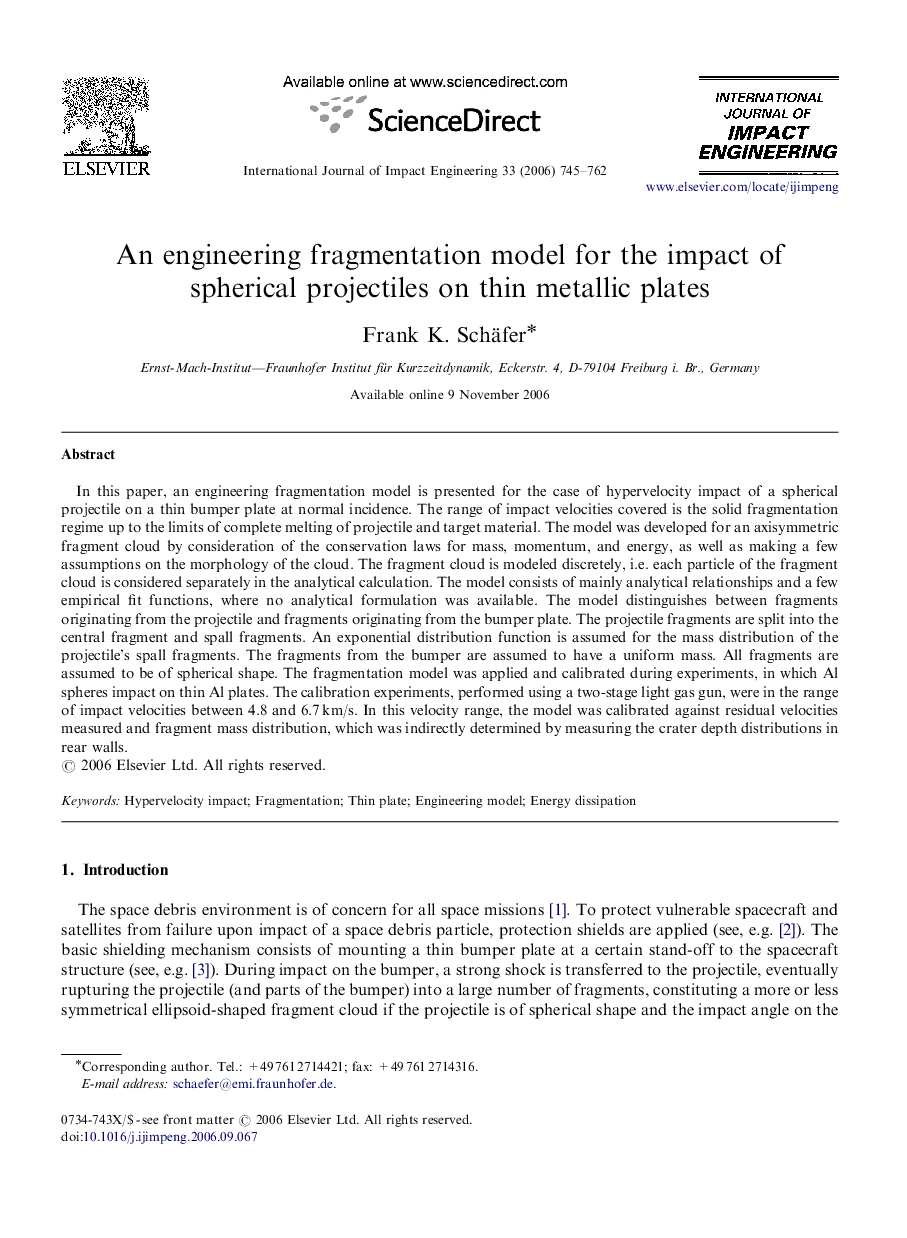| Article ID | Journal | Published Year | Pages | File Type |
|---|---|---|---|---|
| 779640 | International Journal of Impact Engineering | 2006 | 18 Pages |
In this paper, an engineering fragmentation model is presented for the case of hypervelocity impact of a spherical projectile on a thin bumper plate at normal incidence. The range of impact velocities covered is the solid fragmentation regime up to the limits of complete melting of projectile and target material. The model was developed for an axisymmetric fragment cloud by consideration of the conservation laws for mass, momentum, and energy, as well as making a few assumptions on the morphology of the cloud. The fragment cloud is modeled discretely, i.e. each particle of the fragment cloud is considered separately in the analytical calculation. The model consists of mainly analytical relationships and a few empirical fit functions, where no analytical formulation was available. The model distinguishes between fragments originating from the projectile and fragments originating from the bumper plate. The projectile fragments are split into the central fragment and spall fragments. An exponential distribution function is assumed for the mass distribution of the projectile's spall fragments. The fragments from the bumper are assumed to have a uniform mass. All fragments are assumed to be of spherical shape. The fragmentation model was applied and calibrated during experiments, in which Al spheres impact on thin Al plates. The calibration experiments, performed using a two-stage light gas gun, were in the range of impact velocities between 4.8 and 6.7 km/s. In this velocity range, the model was calibrated against residual velocities measured and fragment mass distribution, which was indirectly determined by measuring the crater depth distributions in rear walls.
